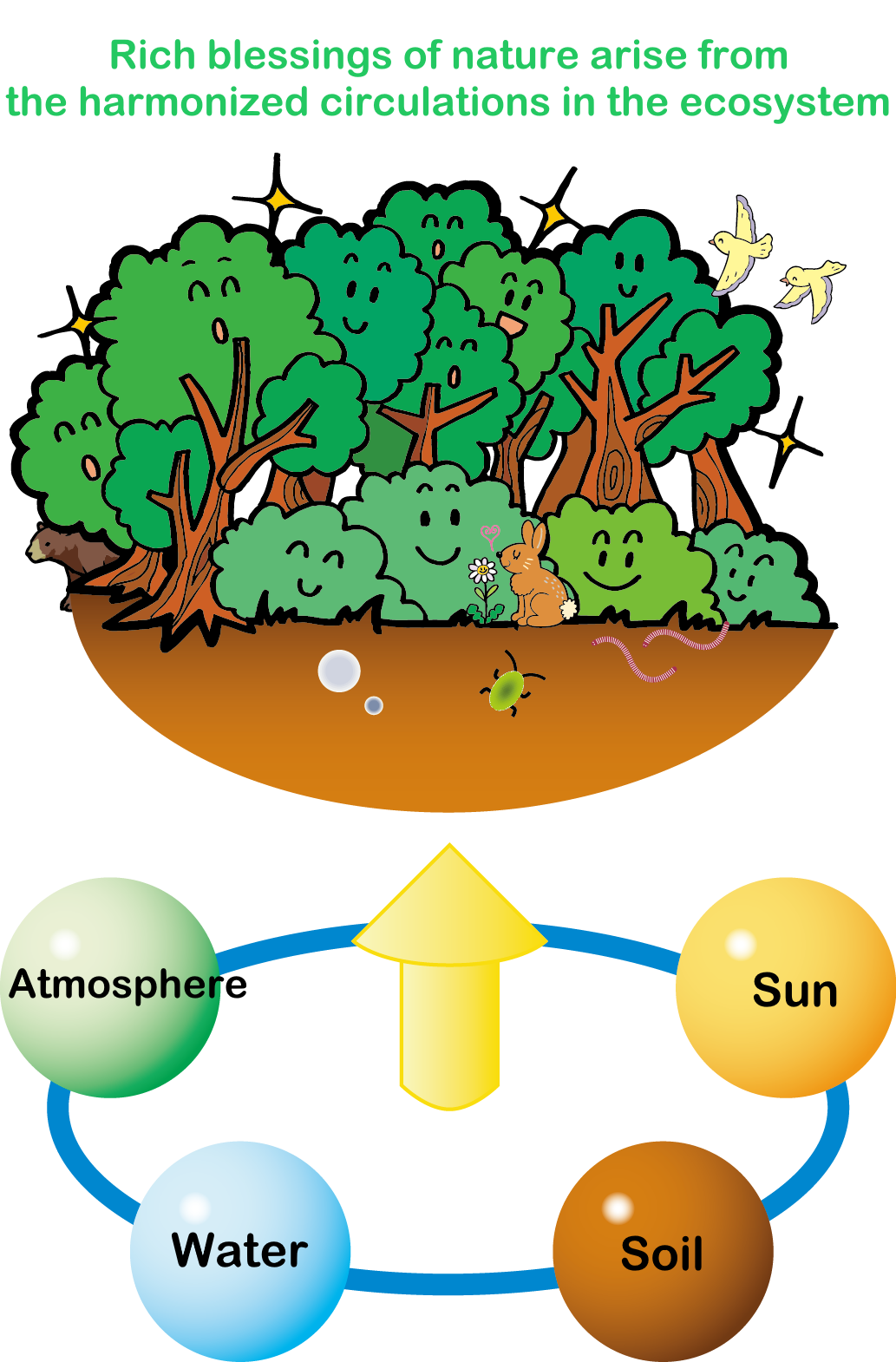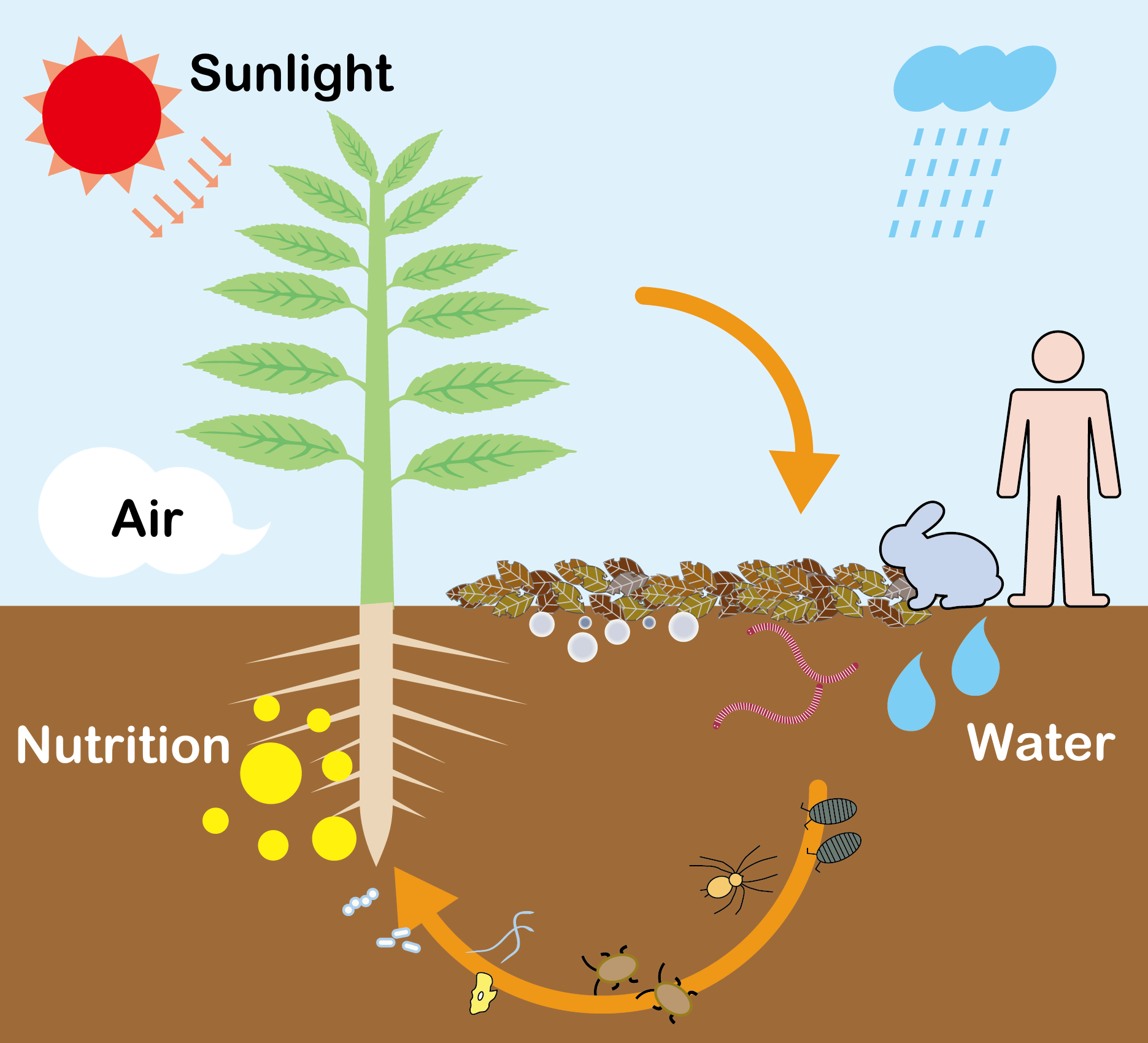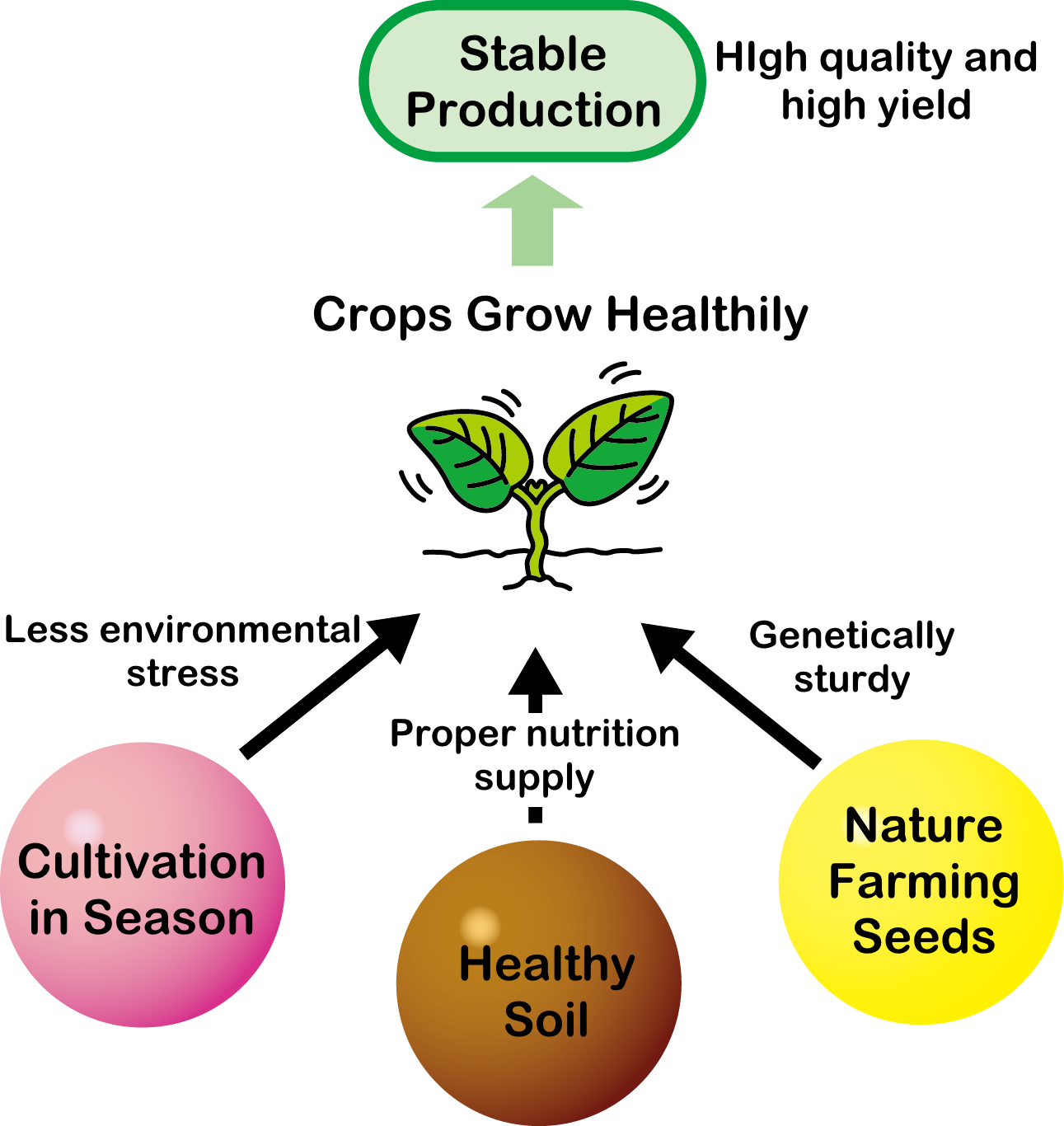
Nature Farming is a farming method for producing healthy quality crops abundantly by allowing the soil to exert its power to the maximum without using pesticides and chemical fertilizers. It was first advocated in 1935 by Mokichi Okada (1882 ~ 1955), a philosopher and religious leader. His philosophy and principle of Nature Farming are as follows.
Philosophy: Respect nature and conform to its laws.
Principle: Allow the living soil to exert its great power.
Based on these ideas, Nature Farming aims to sustainably produce crops by deriving the intrinsic power of nature heading for affluent living things without using chemical fertilizers and pesticides (both synthetic and natural), which disturb the ecosystem. It values the role of every living thing and improves the matter cycle function by enhancing the farmland ecosystem so that nature can exert its functions more. The farming method has been succeeded and practiced by those who have sympathized with Okada’s ideas even through the times of frequently using chemical fertilizers and pesticides. Today, more people are concerned with food safety than before, and influences of pesticides and chemical fertilizers on the environment, including ourselves, are widely recognized in the society. Nature Farming is now more demanded to protect the environment and our health.
INFRC has set the following five requirements for the desirable form of Nature Farming.
Many people think that “natural” means a condition which has not been modified or treated by human beings and thus that nature farming is a farming method in which human beings do not do anything and let crops to grow on their own. Nature Farming, we promote, however, is not such a method. It is a farming method in which human beings properly and actively work on the soil and crops while avoiding the use of pesticides and chemical fertilizers.
Nature is equipped with the directionality in which more living things are richly harmonized with each other and with complex and ingenious mechanisms to support it. Nature meant by the word “Nature Farming” is not nature simply seen by our eyes but includes such various mechanisms and functions lying in it.

There are some basic approaches in Nature Farming.
Circulation of matter, energy and life mediated by living things

The circulation of matter mediated by living things is also a chain of life forms. Our life is supported by the life of other plants and animals.
For us to live healthy and rich lives, plants and animals supporting our lives also need to be healthy and full of life. The main purpose of Nature Farming is to produce crops which are healthy and full of life and to supply them to consumers.
Since crops are a source of our lives, they must be safe and be produced stably. A productive soil has a developed structure, is mellow, is equipped with a moderate water permeability and drainage as well as a good water-holding capacity, retains fertilizer well and contains many and various soil microorganisms. Such soils can be seen in forests and lake areas. We think it is most important to nurture soil,* in which good humus in the soil is increased and rich soil organisms are nurtured. To nurture soil, it is indispensable to utilize unused resources in the local area and to produce organic matter during fallow periods.
* In Nature Farming, “soil nurturing” is used to mean “to grow a living soil,” rather than the ordinary word “soil conditioning.”
In addition, it is also necessary to use seeds which have the vital power to produce offsprings even in severe environments, to cultivate crops in seasons suitable to their physiology and to try not to depend on production materials and chemical materials.
Keys to Cultivation for Stable Crop Production

Many people think that “natural” means a condition which has not been modified or treated by human beings and thus that nature farming is a farming method in which human beings do not do anything and let crops to grow on their own. Nature Farming, we promote, however, is not such a method. It is a farming method in which human beings properly and actively work on the soil and crops while avoiding the use of pesticides and chemical fertilizers.
Nature is equipped with the directionality in which more living things are richly harmonized with each other and with complex and ingenious mechanisms to support it. Nature meant by the word “Nature Farming” is not nature simply seen by our eyes but includes such various mechanisms and functions lying in it.
